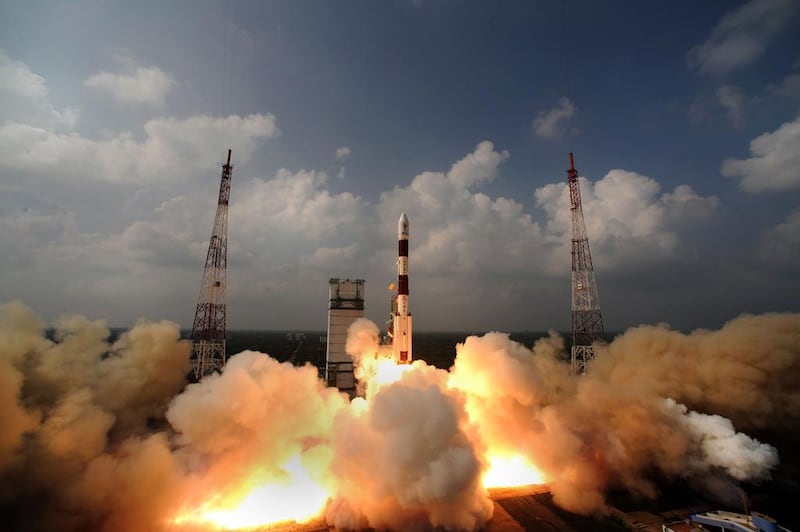NEW DELHI // India’s bid to become the first Asian nation to reach Mars sets a new benchmark for frugal interplanetary travel and puts it in a perfect position to grab more of the Dh1 trillion global space market.
“Everyone wants to do low-cost missions nowadays,” said Pallava Bagla, an Indian science author. “Don’t underestimate it because it is a low-cost mission.”
The Indian Space Research Organisation (Isro) staged a flawless launch last week of its Mars-bound spacecraft, loaded with a camera, an imaging spectrometer and a methane sensor to search for life on the red planet.
The mission’s price, a record-low Dh268 million, “has been an eye-opener of sorts” for the world, said Susmita Mohanty, the co-founder and chief executive of Mumbai’s Earth2Orbit, India’s first private space enterprise start-up.
That is not only because of the mission’s meagre price when compared to its United States counterpart, Nasa’s Maven, due to launch next week and costing 10 times as much, but also because “the world was largely ignorant about the advanced nature of India’s space programme”, Ms Mohanty said.
India already ranks among the top six space-faring nations in technological capabilities – the others being the US, Russia, China, France and Japan, she said.
India’s successful lunar orbiter mission in 2008, Chandrayaan-1, which cost $89m, got the ball rolling in showing how to carry out space exploration on a minimal budget. The Mars mission enhances its low-cost reputation.
The secret to the Indian space programme’s trailblazing affordability – Isro has an annual budget of $1.1bn, one-seventeeth of Nasa’s – has been “indigenisation of the programme, which has helped keep costs low,” the Isro spokesman Deviprasad Karnik said.
“The launch vehicle – the Polar Satellite Launch Vehicle, which is a workhorse – and spacecraft are Indian,” Mr Karnik said. The pay scales of its scientists are also far lower than in the West.
Lacking a rocket large enough to fire the satellite directly out of Earth’s atmosphere, Isro had to rely on the concept of jugaad – creating a cheap alternative solution.
Instead of flying directly to Mars, the 350-tonne vehicle will orbit Earth for nearly a month, building up the speed to “slingshot” its way out of the earth’s gravitational pull to embark on its 400km journey.
With foreign space agencies increasingly looking to outsource space missions to rein in spending, Isro could compete for multibillion-dollar contracts, experts said.
Success of the Mars mission is by no means assured, as recent attempts by both China and Japan have failed.
But two US rovers, two US orbiters and a European satellite are already exploring Mars.
* Agence France-Presse





